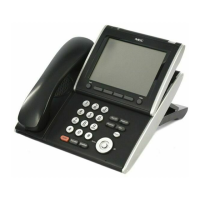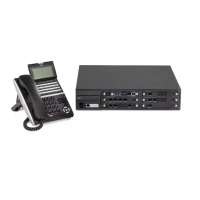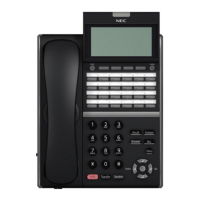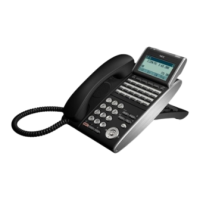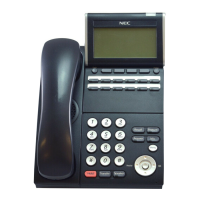1024
Incoming Call Trunk Setup
Assign the incoming trunk type (0) for each
trunk. There is one item for each Night Service
Mode.
This option must be set to 0 for Ring Groups to
work.
Day/Night Mode: 1~8
0 = Normal
1 = VRS (second dial tone if no
VRS installed)
2 = DISA
3 = DID
4 = DIL
5 = E&M Tie line
6 = Delayed VRS
7 = ANI/DNIS
8 = DID(DDI) Mode Switching
Incoming Extension Ring Group
Assignment
Assign extensions (up to 48) to Ring Groups.
Calls ring extensions according to Ring Group
programming. There are 100 available ring
groups.
Extensions
101 ~ 108 (first
eight ports) ring
for incoming
Ring Group 1
calls. No other
extensions ring
for incoming
Ring Group 1
calls.
Incoming Trunk Ring Group Assignment
Assign trunks to ring groups.
Trunks 1 ~ 400
Incoming Group Number for
Day/Night Mode (1 ~ 8):
0 = (No Setting)
001 ~ 100 = (Incoming Group)
102 = (In-Skin/ External Voice
Mail or InMail)
103 = (Centralized VM)
Normal Incoming Ring Mode
Define whether or not an extension should ring
for the Normal Incoming Ring Mode.
DIL/IRG No Answer Destination
For DIL Delayed Ringing, assign the DIL No
Answer Ring Group. An unanswered DIL rings
this group after the DIL No Answer Time
(Program 22-01-04) expires. DIL Delayed
Ringing can also reroute outside calls ringing a
Ring Group In-Skin/External Voice Mail, or
Centralized Voice Mail.
0 = (No Setting)
001 ~ 100 = Incoming Ring
Group
102 = (In-Skin/External Voice
Mail or InMail)
103 = Centralized VM
DID Intercept Ring Group
For each DID Translation Table, assign the
destination for DID Intercept. The destination
can be a Ring Group, In-Skin/External Voice
Mail, or Centralized Voice Mail. For each table,
make a separate entry for each Night Service
mode.
0 = (No Setting)
001 ~ 100 = Incoming Ring
Group
102 = (In-Skin/External Voice
Mail or InMail)
103 = Centralized VM

